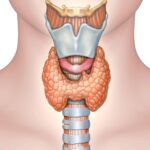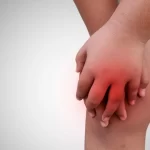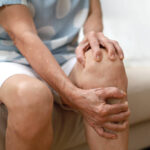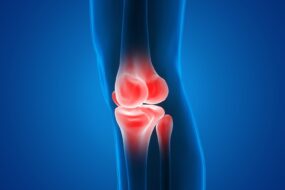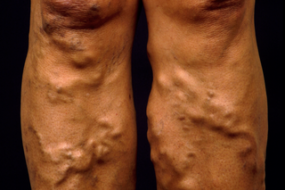
Crohn’s disease is an inflammatory bowel disease that can involve any part of the gastrointestinal tract from mouth to anus
- 40%- ileal or ileocolic
- 30-40% small bowel
- 20%- colon
- <10%- perianal disease alone
Associated factors
- Family history
- Autoimmune disorders
- Smoking
- High refined sugar diet
- Dysbiosis-altered gut microbiota
- Reduced physical activity
Pathophysiology
The entire wall is thickened, and deep ulcers appear as fissures. The mucosa in between is described as cobblestone. Abscesses or fistulae may form in the wall.
- Lymph nodes are enlarged, and mesentery is thickened
- Involves all layers of the wall( transmural)
- It has a patchy distribution
Clinical presentation
- Abdominal pain, diarrhoea and weight loss are the major symptoms
- Diarrhoea is watery and not bloody or mucoid
- Intestinal obstruction in ileal disease
- Eating provokes abdominal pain. This may contribute to weight loss
- Weight loss may also be due to malabsorption
- Rectal sparing with perianal disease favours a diagnosis of Crohn’s disease.
- A few will present with an isolated perianal disease, vomiting from jejunal strictures or severe oral ulceration.
Physical examination;
- Evidence of weight loss
- Anaemia with glossitis and angular stomatitis
- Abdominal tenderness, marked over the inflamed area
- Palpable abdominal mass- loops of thickened bowel or abscess
- Perianal skin tags, fissures or fistulae
Differential diagnosis
- Ulcerative colitis
- Infectious colitis
- Celiac disease
- Diverticular colitis
- Irritable bowel syndrome
- Lactose intolerance
Investigations
-Lab tests;
- CBC, blood chemistry, serum iron, vitamins D and B12 levels, CRP
- Stool tests for enteric pathogens, stool inflammatory markers
-Endoscopy;
- Focal ulcerations adjacent to areas of normal mucosa and cobblestone appearance
- Biopsies are obtained
-Histologic findings- focal ulcerations and inflammation. Findings are confirmatory, not diagnostic. Granulomas are found in 30% of cases.
-Small bowel imaging- MRI
- Alternatives are CT scan and barium follow-through
Management
Goals;
- Agree with the patient on long-term treatment goals
- Monitor patient for evidence of disease activity and complications
- Ensure mucosal healing is achieved
Induction of remission;
- Glucocorticoids are the mainstay of treatment for active disease
- Budesonide is the first line for ileal disease. If there’s no response in 2 weeks, switch to Prednisolone, given for eight weeks, 40mg daily, reducing by 5mg per week.
- The prednisone dose above is used to induce remission in colonic disease.
- An elemental or polymeric diet is an alternative to glucocorticoids
- IV glucocorticoids for severe colonic disease
- Severe ileal or panenteric disease- anti-TNF agent, infliximab, adalimumab
- AntiTNF plus a thiopurine- most effective for inducing and maintaining remission in luminal disease
Maintenance therapy;
- Thiopurines- azathioprine, mercaptopurine
- Methotrexate
- Vedolizumab- if there is no response to anti-TNF
- Counsel patients to stop smoking
Fistulae and perianal disease;
- Define the site by imaging
- Surgical exploration to delineate anatomy and drain abscesses
- Seton sutures can be inserted through fistula tracts
- Antibiotics to aid in healing
- Thiopurines can also be used in chronic disease
- If measures above fail, give anti-TNF agents
- Proctectomy or diverting colostomy for refractory perianal disease
Surgery;
- For fistulae, strictures, perianal disease and intestinal obstruction
- Surgery is, however, not curative
- Smoking cessation to reduce recurrence
- Colonoscopy 6 months post-surgery
- Thiopurines, if recurrence occurs
- Resection of affected bowel can be done in cases of obstructing or fistulating disease.
- Colitis- resection or even total colectomy
Complications
- Strictures
- Fistula
- Abscess
Prognosis
-Symptoms are chronic and intermittent for many patients, but the course can vary.
-There is an increased risk of cancer
-Risk factors for progressive disease;
- Age <40 years
- Perianal or rectal involvement
- Glucocorticoid requiring disease
- Tobacco use


